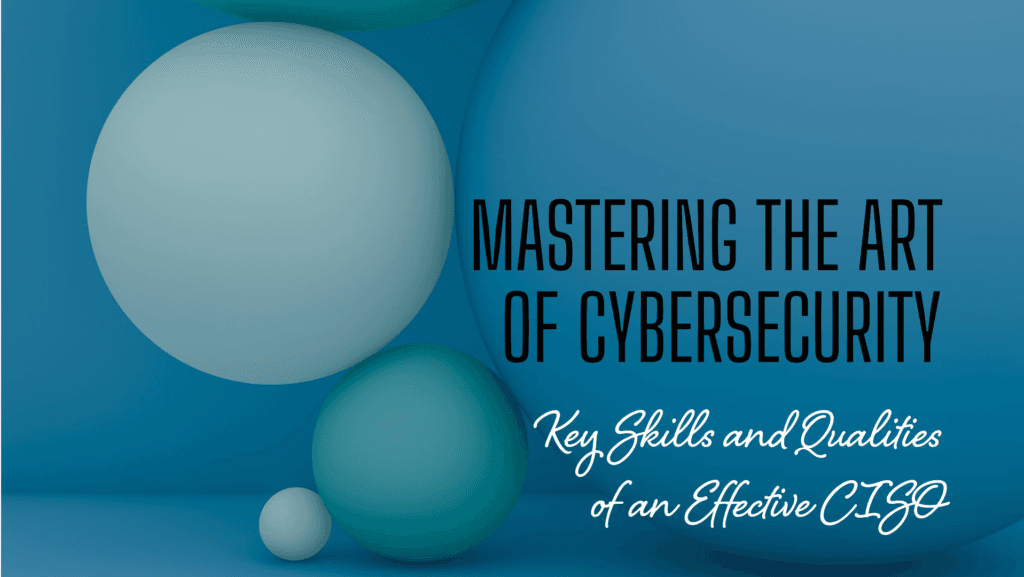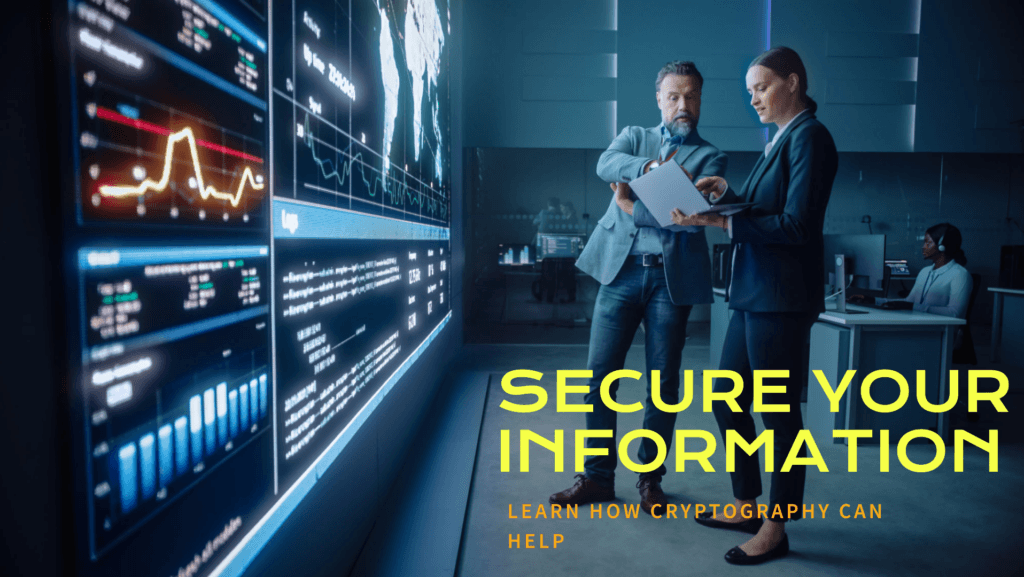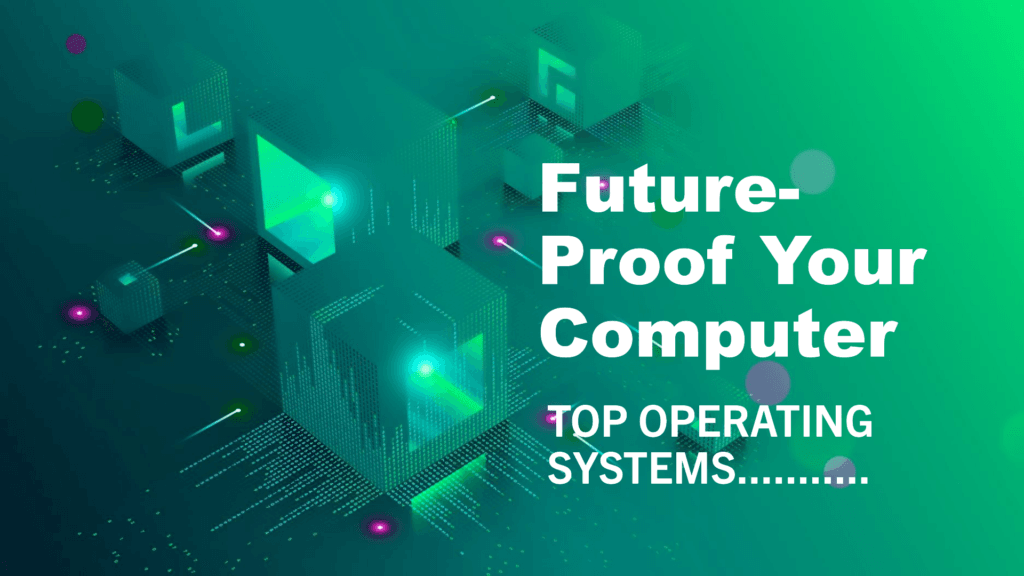With data breaches, ransomware attacks, and cybercrime on the rise, protecting sensitive information has become more crucial than ever. Enter the Chief Information Security Officer (CISO)—a vital leadership role responsible for overseeing an organization’s cybersecurity strategy and ensuring its defense against these threats.
On this “Technology Moment” blog, we dive into the evolving role of the CISO, exploring their critical responsibilities, the challenges they face, and the leadership skills required to navigate the complex world of cybersecurity. Whether you’re looking to understand the strategic importance of this role or curious about how CISOs shape an organization’s security framework, this article provides essential insights into cybersecurity leadership and its impact on modern businesses.
Why Cybersecurity Leadership Matters
Cybersecurity is no longer just an IT concern—it’s a business-critical issue that requires leadership at the highest levels. A Chief Information Security Officer (CISO) plays a pivotal role in ensuring the organization’s security posture is strong, its data is protected, and its operations remain resilient to evolving cyber threats. Without proper cybersecurity leadership, organizations leave themselves vulnerable to severe consequences, including data breaches, financial loss, reputational damage, and even legal implications.
In many cases, the CISO is the person who assesses the risks the company faces and crafts a strategy to mitigate those risks. This responsibility requires a thorough understanding of not just technology but also the business environment, as the CISO must balance security needs with the overall goals and objectives of the organization.
The Growing Importance of the CISO Role
The CISO’s role has expanded significantly over the years. Initially, cybersecurity was primarily handled by IT departments with a focus on technical defenses. However, as cyber threats have become more complex and pervasive, the need for a strategic, enterprise-wide approach to cybersecurity has risen. Today, the CISO is a critical part of the executive leadership team and plays a key role in shaping the company’s strategic direction.
Moreover, regulatory and compliance requirements are tightening, making the CISO’s responsibilities even more crucial. Laws such as GDPR (General Data Protection Regulation), HIPAA (Health Insurance Portability and Accountability Act), and CCPA (California Consumer Privacy Act) have increased the pressure on organizations to protect customer data and privacy. As a result, companies now recognize the importance of having a CISO who can navigate these complex regulations and ensure the organization remains compliant while safeguarding sensitive information.
Ultimately, effective cybersecurity leadership is about more than just preventing breaches—it’s about building a culture of security, making informed decisions, and aligning cybersecurity initiatives with business goals. A well-resourced and empowered CISO can be the difference between a successful, secure organization and one that falls victim to a devastating cyberattack.
Table of Contents
What is a Chief Information Security Officer (CISO)?
A Chief Information Security Officer (CISO) is a high-level executive responsible for the overall security of an organization’s information and technology systems. As the title suggests, the CISO is in charge of the information security program, which includes managing, overseeing, and ensuring the confidentiality, integrity, and availability of all company data.
In simpler terms, the CISO’s role is to safeguard the organization’s digital assets, ensure compliance with relevant laws and regulations, and mitigate any security risks that may arise. With cyber threats becoming more sophisticated, the CISO’s role is crucial in protecting the organization’s sensitive information from breaches or attacks.
Defining the Role of a CISO
The CISO is responsible for developing and implementing cybersecurity strategies, policies, and programs. This often includes creating a framework for how information should be protected across the organization, from employee data to intellectual property. Some of the main areas under the CISO’s purview include:
- Data Protection: The CISO ensures that sensitive data, including personal information, financial details, and business secrets, is well-protected from unauthorized access.
- Cybersecurity Risk Management: Identifying, evaluating, and mitigating potential risks to the organization’s digital infrastructure. This may include everything from a simple malware attack to sophisticated cyber espionage.
- Compliance and Regulatory Oversight: The CISO is responsible for ensuring that the company complies with data protection regulations and industry standards, such as the General Data Protection Regulation (GDPR) or Health Insurance Portability and Accountability Act (HIPAA).
The role may also involve collaboration with other senior executives to align the organization’s security needs with broader business objectives. A CISO often reports directly to the CEO or, in larger organizations, to the Chief Technology Officer (CTO) or Chief Risk Officer (CRO).
Key Responsibilities of a CISO
A CISO’s responsibilities can vary depending on the size and type of the organization, but some key duties include:
- Strategic Planning and Governance: The CISO works with the executive team to set the organization’s cybersecurity strategy, ensuring it aligns with business goals. This includes creating policies for data management, monitoring, and incident response.
- Managing the Security Team: The CISO often leads a team of security professionals, including IT security officers, analysts, and incident responders. Managing this team effectively ensures the day-to-day monitoring of systems and the rapid response to potential threats.
- Incident Response: In the event of a security breach or attack, the CISO takes charge of managing the crisis. This includes developing incident response plans, coordinating with internal and external teams, and communicating with stakeholders about the breach.
- Security Awareness Training: The CISO ensures employees across the organization are aware of best practices for maintaining security, such as recognizing phishing emails or using strong passwords. A culture of security awareness is crucial for reducing human errors that can lead to breaches.
- Budget and Resource Allocation: In some organizations, the CISO is also responsible for the cybersecurity budget. This involves evaluating and selecting security tools, ensuring adequate resource allocation, and justifying security expenditures to upper management.
- Third-Party Risk Management: Many modern organizations rely on third-party vendors for various services. The CISO ensures these partners adhere to the organization’s security standards, particularly when dealing with sensitive data.
- Staying Ahead of Emerging Threats: Since cybersecurity threats are constantly evolving, the CISO stays informed about new vulnerabilities and attack methods. This includes continuously evaluating and improving the security posture of the organization.
The Evolution of the CISO Role
The Chief Information Security Officer (CISO) role has undergone significant transformation over the years, adapting to the increasing complexities of cybersecurity threats and the growing importance of information security in the modern business landscape. Let’s break down the evolution of the CISO role and how it has become a cornerstone of cybersecurity leadership in organizations.
From IT Support to Boardroom Influence
In the early days of cybersecurity, the responsibility for securing an organization’s digital assets primarily fell under the IT department. Cybersecurity was often viewed as a technical issue, dealt with by IT professionals or network administrators, and there wasn’t much emphasis on strategic alignment with the business’s overall goals. The focus was on protecting the network infrastructure, ensuring systems were up and running, and addressing immediate security concerns.
However, as cyber threats grew in sophistication and frequency, businesses realized that cybersecurity needed to be more than just an IT function. This is when the CISO role began to emerge. Initially, the CISO was still considered a part of the IT department, tasked with technical leadership over the organization’s security posture. However, over time, CISOs started to step out of the purely technical space and into the executive sphere, where they could communicate the importance of cybersecurity to the organization’s leadership and align security efforts with broader business strategies.
In recent years, the role of the CISO has evolved further to become a strategic one that is directly connected to the board of directors. Today, many CISOs report to the CEO or the board of directors, ensuring that cybersecurity is integrated into the core strategy of the business. This change reflects the growing recognition that cybersecurity is not just an IT problem but a business-critical issue that affects the company’s reputation, finances, and long-term viability.
How the Threat Landscape Has Changed
Along with the role of the CISO, the cybersecurity threat landscape has also evolved. The rise of cloud computing, mobile devices, and the Internet of Things (IoT) has expanded the attack surface for organizations, making it much harder to protect data and systems. No longer can businesses rely on traditional perimeter defenses like firewalls and VPNs to protect their networks. Cybercriminals are more sophisticated than ever, employing tactics such as ransomware, phishing attacks, and advanced persistent threats (APTs) to infiltrate networks and cause harm.
The role of the CISO has had to adapt to these changes by becoming more proactive and comprehensive. Rather than simply defending against known threats, CISOs now must anticipate new vulnerabilities, stay ahead of cybercriminal tactics, and ensure the organization’s cybersecurity strategy is agile enough to respond to emerging risks. In addition to preventing and responding to attacks, modern CISOs are tasked with driving innovation in cybersecurity, such as integrating artificial intelligence (AI) and machine learning into threat detection, automating security processes, and ensuring that the organization’s cybersecurity posture remains resilient as technology evolves.
The CISO as a Change Agent
As the scope of cybersecurity expanded, the CISO role also became more focused on organizational change management. Today’s CISOs are not just technical experts—they are business leaders who need to influence company-wide decisions, foster a security-conscious culture, and champion the integration of security practices into everyday business activities. This shift in responsibility is also due to the fact that many data breaches and security incidents occur due to human error or negligence, such as employees falling victim.
Thus, the CISO’s role in driving cultural change has become just as important as their technical skills. Modern CISOs are expected to lead the charge in creating training programs, awareness campaigns, and establishing security as a fundamental aspect of the organization’s DNA. In some cases, the CISO has even taken on the role of a Chief Risk Officer (CRO) by overseeing enterprise-wide risk management efforts that go beyond just information security.
CISO in the Modern Era
In the present day, the CISO is not just about mitigating risks and responding to incidents. They are key decision-makers who influence the direction of an organization’s technology infrastructure, shaping how businesses implement new technologies securely. The CISO plays a critical role in ensuring compliance with evolving regulations, managing the security of third-party relationships, and coordinating with legal, HR, and other departments in times of a security breach.
Moreover, with the rapid digital transformation taking place in businesses globally, CISOs must also manage a growing number of responsibilities. These include data protection, governance, ensuring privacy, and securing cloud environments, all while addressing the increasing regulatory demands and the need to maintain business continuity.
The CISO’s involvement in the boardroom, their influence over decision-making, and their ability to align cybersecurity strategy with business goals and risk management has made them an essential part of an organization’s leadership team. This evolution demonstrates that cybersecurity is no longer a secondary concern, but a central pillar of any successful business strategy.
Key Skills and Qualities of an Effective CISO
The CISO’s leadership is vital in setting the cybersecurity strategy, implementing security measures, and ensuring the organization remains resilient in the face of potential attacks. For a CISO to be effective, they must possess a blend of technical expertise, strategic thinking, and strong leadership qualities.

Here are the key skills and qualities that make an effective CISO:
Technical Expertise
A successful CISO must have a deep understanding of information security concepts, technologies, and best practices. This technical expertise enables them to assess risks, design security architectures, and respond to security incidents effectively. The CISO should be proficient in areas such as:
- Network Security: Understanding firewalls, intrusion detection systems (IDS), and virtual private networks (VPNs) is crucial for designing a robust defense system.
- Encryption Technologies: Knowledge of cryptography and data protection mechanisms ensures that sensitive information is secured.
- Security Frameworks and Standards: Familiarity with cybersecurity standards such as ISO 27001, NIST Cybersecurity Framework, and CIS Controls helps the CISO create structured and effective security policies.
Although the CISO doesn’t need to be a hands-on technical expert, having a solid grasp of the technical side of cybersecurity is essential for making informed decisions.
Strategic Thinking
In today’s complex business environment, cybersecurity is no longer just an IT issue—it is a core business concern. An effective CISO must possess strategic thinking to align cybersecurity goals with the organization’s broader business objectives. This includes:
- Risk Management: The CISO must assess and prioritize cybersecurity risks based on the potential impact on the business. This requires the ability to identify threats, evaluate their likelihood, and allocate resources accordingly.
- Long-Term Planning: A good CISO anticipates future risks and plans for emerging threats. They work with other executives to build a proactive cybersecurity strategy that ensures long-term protection.
- Budgeting and Resource Allocation: Strategic thinking is essential when managing the cybersecurity budget. The CISO must balance spending on preventive measures, incident response, and compliance while ensuring the business’s financial health.
Communication and Leadership
Being a successful CISO isn’t just about technical know-how; it’s also about leading and communicating effectively with both technical teams and non-technical executives. Key leadership and communication skills include:
- Stakeholder Communication: The CISO must communicate complex cybersecurity issues clearly to senior management, the board of directors, and other stakeholders. They need to articulate risks, challenges, and the return on investment (ROI) for cybersecurity initiatives.
- Team Leadership: A CISO should inspire and lead cybersecurity teams, fostering a culture of collaboration and accountability. They should mentor staff, encourage professional development, and ensure the team is motivated and aligned with the organization’s security goals.
- Crisis Management: In times of a security breach, a CISO must act swiftly and decisively. They should lead incident response efforts, coordinating with internal teams and external partners to mitigate damage and restore operations.
Effective communication and leadership are essential to gaining buy-in for cybersecurity initiatives and building an organization-wide culture of security.
Problem-Solving and Decision-Making
Cybersecurity is an ever-changing landscape, and CISOs need strong problem-solving abilities to navigate through complex issues. They should:
- Think critically: Assessing risks and deciding on the most effective security measures often requires analyzing data, considering multiple scenarios, and making tough calls.
- Make data-driven decisions: Effective CISOs rely on data to guide their decisions, whether it’s from security analytics, threat intelligence, or vulnerability assessments. Using data to evaluate security risks helps ensure decisions are based on facts, not assumptions.
Adaptability and Continuous Learning
The world of cybersecurity is constantly evolving, with new threats, technologies, and regulations emerging regularly. A top-notch CISO must be adaptable and committed to continuous learning, including:
- Staying Current with Cybersecurity Trends: Being aware of new threats, vulnerabilities, and technologies is vital. This includes attending industry conferences, reading cybersecurity publications, and participating in training programs.
- Learning from Past Incidents: An effective CISO reviews past security breaches or incidents to learn from them. They make improvements to the security posture based on lessons learned.
Adaptability allows the CISO to stay one step ahead of cybercriminals and maintain an organization’s security resilience.
Business Acumen
While a CISO is focused on cybersecurity, they must also understand how cybersecurity decisions affect the broader business. A CISO with strong business acumen will be able to:
- Align Cybersecurity with Business Goals: A deep understanding of the organization’s objectives allows the CISO to integrate cybersecurity into the overall business strategy.
- Understand Financial Implications: Cybersecurity investments require a cost-benefit analysis. A CISO must be able to justify the costs of security initiatives and demonstrate the potential ROI by reducing risk.
Ethics and Integrity
Finally, an effective CISO must possess a high level of ethics and integrity. They are entrusted with handling sensitive company data and must ensure that all cybersecurity practices comply with legal and ethical standards. This includes maintaining confidentiality, fostering a culture of honesty, and advocating for security policies that protect the interests of both the organization and its stakeholders.
The Role of the CISO in Cybersecurity Strategy
The Chief Information Security Officer (CISO) plays a pivotal role in shaping and implementing an organization’s cybersecurity strategy. In today’s digital age, where data breaches, ransomware, and cyberattacks are increasingly common, the CISO is not just a technical expert but a strategic leader in protecting an organization’s information assets. Here’s a detailed look at how a CISO contributes to cybersecurity strategy:
Designing a Comprehensive Security Framework
One of the CISO’s primary responsibilities is designing and overseeing the implementation of a comprehensive cybersecurity framework that aligns with the organization’s overall business goals and objectives. This framework must ensure that the organization’s data and systems are protected from external threats, internal vulnerabilities, and evolving attack vectors.
A strong security framework includes:
- Risk Assessment: The CISO must first assess the organization’s risk landscape, identifying potential threats, vulnerabilities, and the impact of various security breaches on business operations. This involves understanding both technical and non-technical risks, such as regulatory non-compliance or the reputational damage of a breach.
- Security Policies: The CISO helps develop and enforce policies that govern how data should be handled, accessed, and secured across the organization. This includes password policies, access control measures, encryption standards, and acceptable use policies.
- Security Architecture: The CISO must ensure that the organization’s network, cloud infrastructure, endpoints, and applications are securely designed. This involves implementing robust defenses such as firewalls, intrusion detection systems (IDS), and multi-factor authentication (MFA) to create a layered security model, often referred to as “defense in depth.”
- Continuous Monitoring and Improvement: A cybersecurity strategy isn’t static. The CISO must ensure continuous monitoring of security systems to identify vulnerabilities and threats in real time. This includes implementing security information and event management (SIEM) systems and conducting regular audits and assessments to identify gaps in security.
- Alignment with Business Strategy: The security framework must be flexible enough to align with the organization’s business strategy, ensuring that security measures do not hinder growth or innovation. The CISO works closely with other departments, including IT, legal, and operations, to ensure that security policies support organizational objectives.
Incident Response and Crisis Management
Another critical aspect of the CISO’s role in cybersecurity strategy is preparing for and managing security incidents. Cyberattacks are inevitable, and when they occur, a swift and effective response can minimize damage and recovery time.
- Incident Response Plan Development: The CISO leads the creation of a detailed incident response plan, which outlines the steps to take when a cyberattack is detected. This plan includes identifying the type of attack, containing the threat, investigating the breach, and recovering data or systems.
- Team Coordination: The CISO coordinates with various teams, including IT, legal, and communications, to respond to security incidents. They ensure that all stakeholders are informed and that an appropriate crisis management plan is executed. This includes managing external communications, such as notifying regulatory bodies or customers if required by law.
- Root Cause Analysis: After an incident, the CISO is responsible for conducting a thorough investigation to identify how the attack occurred, what vulnerabilities were exploited, and what can be done to prevent a similar breach in the future. This often leads to updates in the organization’s security policies, tools, and training programs.
- Post-Incident Review: Following a security breach, the CISO leads a post-incident review to assess the effectiveness of the response and identify areas for improvement. This analysis is critical for fine-tuning the organization’s cybersecurity strategy, ensuring that future incidents are handled more effectively.
- Rebuilding Trust: After a crisis, the CISO plays a role in rebuilding trust with clients, partners, and customers. This could involve transparent communication about what happened, steps taken to resolve the issue, and how future risks will be mitigated.
Collaborating with Other Leaders
To be effective, the CISO must collaborate with other executives and departments. Cybersecurity is not just the responsibility of the CISO or IT department — it’s an organization-wide priority. The CISO works closely with:
- CEO and Board Members: The CISO must regularly report to the CEO and board of directors about the organization’s cybersecurity posture. This includes providing strategic guidance on cybersecurity investments and potential risks that could impact the business.
- CFO: The CISO collaborates with the CFO to align cybersecurity budgets with organizational goals and identify areas where investment in new technologies, tools, or training may be needed. Financial considerations, such as the cost of implementing advanced security solutions, must be carefully weighed.
- Legal and Compliance Teams: The CISO works with the legal and compliance departments to ensure that the organization meets all regulatory requirements and adheres to industry standards for data protection. This is particularly important in industries like finance, healthcare, and government, where regulations such as GDPR or HIPAA are strict.
- Human Resources (HR): Since human error is one of the leading causes of security breaches, the CISO collaborates with HR to establish comprehensive employee training programs. These programs focus on raising awareness about phishing attacks, password security, and other common threats.
Challenges Faced by CISOs
The role of a Chief Information Security Officer (CISO) is crucial in any organization, as they are responsible for safeguarding digital assets, managing risks, and ensuring compliance with cybersecurity regulations. However, this leadership role comes with a set of complex challenges that can often seem overwhelming. Here, we’ll explore some of the key challenges CISOs face in today’s rapidly evolving digital landscape.
Balancing Security with Business Objectives
One of the most significant challenges faced by CISOs is finding the right balance between security and business needs. While it’s essential to implement robust security measures, businesses also want to maintain operational efficiency, minimize costs, and ensure growth.
- Security vs. Speed: Security protocols, such as multi-factor authentication, encryption, and regular patching, can sometimes slow down business processes. CISOs must work closely with other departments to implement security strategies that protect the organization without hindering day-to-day operations.
- Cost-Effectiveness: Budget constraints often force CISOs to make difficult decisions about where to invest resources. They must choose between short-term solutions and long-term strategies while ensuring the security infrastructure is strong enough to handle emerging threats.
To navigate this challenge, CISOs need to develop a deep understanding of both cybersecurity and the company’s business objectives, aligning the security strategy with the overall goals of the organization.
Addressing Emerging Threats and Risks
The cyber threat landscape is always changing. New vulnerabilities and sophisticated attack techniques are emerging regularly, making it difficult for CISOs to keep up.
- Advanced Persistent Threats (APTs): These threats involve highly organized, targeted attacks that can evade traditional security measures. APTs often require CISOs to be proactive in detecting and neutralizing threats, often before they manifest into full-blown security breaches.
- Zero-Day Exploits: Zero-day vulnerabilities, where attackers exploit flaws in software before the developer releases a patch, represent another significant risk. CISOs need to ensure that they are aware of these risks and implement rapid response measures.
- Ransomware Attacks: Ransomware is a growing concern for CISOs. The increasing sophistication of these attacks means that traditional defenses may no longer be enough. CISOs must develop detailed plans for prevention, detection, and recovery, as well as educate employees to avoid falling victim to phishing scams.
In facing these challenges, CISOs need to stay ahead of trends in cyber threats by collaborating with threat intelligence networks, investing in advanced security technologies, and ensuring their team is well-trained and prepared for any attack.
Managing Resources and Budgets
Resource management is another area where CISOs often struggle. Cybersecurity is an ongoing investment, and balancing budget constraints while ensuring sufficient coverage can be a delicate process.
- Understaffed Teams: Many organizations operate with smaller cybersecurity teams, meaning that CISOs often have to do more with fewer resources. This can result in overworked staff and potential gaps in security coverage.
- Technology Investment: There are countless cybersecurity tools and solutions available, but not all are worth the investment. CISOs must decide which tools are most effective for their organization’s specific needs and make sure they are not overspending on redundant or ineffective technology.
- Training and Retention: The shortage of skilled cybersecurity professionals means that CISOs are tasked not only with recruiting but also with retaining their teams. The cost of training and ensuring the staff is updated on the latest security practices can strain budgets, but it’s an essential part of building a competent cybersecurity workforce.
The solution to this challenge lies in effective budgeting, continuous training, and making strategic decisions that allow security measures to scale in line with the growth of the organization.
Navigating Regulatory Compliance
Regulations and compliance requirements are constantly changing, and keeping up with them is a full-time job for a CISO.
- Data Protection and Privacy Laws: Each region has its own set of regulations, making it challenging for global organizations to maintain compliance across various jurisdictions. CISOs must stay up to date with laws and ensure that the company’s cybersecurity practices meet all legal standards.
- Audit and Reporting: Regular audits and assessments are often required to prove compliance, and CISOs must ensure that the organization has the right data management and reporting systems in place. Failure to pass audits can result in legal penalties and a loss of customer trust.
- Third-Party Risk Management: Many organizations depend on third-party vendors for services such as cloud computing or payment processing. CISOs must ensure that these external parties are also complying with necessary regulations to avoid third-party risks.
For CISOs, navigating the regulatory landscape requires continuous monitoring, close collaboration with legal teams, and often, an overhaul of security protocols to ensure full compliance.
CISO’s Role in Compliance and Regulations
In today’s business environment, compliance with legal and regulatory requirements is one of the most critical aspects of cybersecurity. A Chief Information Security Officer (CISO) plays a pivotal role in ensuring that an organization’s cybersecurity practices are aligned with industry standards, laws, and regulations. With the increasing number of data breaches, privacy laws, and other cybersecurity-related regulations, CISOs have become essential in safeguarding an organization’s reputation and financial stability.
Navigating GDPR, CCPA, and Other Regulations
The regulatory landscape for cybersecurity is more complex than ever, with each country or region implementing its own set of laws aimed at protecting personal and sensitive data. A CISO must stay informed about these regulations to ensure compliance and mitigate risks. Some of the most notable regulations include:
- General Data Protection Regulation (GDPR): It imposes strict rules on data collection, processing, and storage, and gives individuals more control over their personal data. A CISO must ensure the organization handles data in compliance with GDPR, which can include implementing data protection impact assessments (DPIAs) and establishing processes for data breach notifications.
- California Consumer Privacy Act (CCPA): Similar to GDPR, CCPA gives California residents the right to know what personal data is being collected about them, to request the deletion. The CISO’s role is to create policies that protect consumers’ data rights and ensure that the organization is transparent about its data collection and usage practices.
- Health Insurance Portability and Accountability Act (HIPAA): For organizations in the healthcare sector, HIPAA compliance is essential. The CISO is responsible for ensuring that patient information is kept secure, ensuring that only authorized personnel have access to sensitive data and that it is encrypted both in transit and at rest.
- Payment Card Industry Data Security Standard (PCI DSS): For organizations handling payment card information, PCI DSS outlines security measures designed to protect credit card data. The CISO plays a role in ensuring that all security measures are implemented and monitored to prevent data breaches related to payment card information.
Regulatory compliance is not just about avoiding fines or penalties—it’s about protecting an organization’s reputation, preserving trust with customers, and safeguarding sensitive information.
Ensuring Organizational Adherence
The CISO is responsible for establishing and enforcing policies and practices that align with compliance standards. This involves:
- Developing a Compliance Strategy: The CISO must create a comprehensive compliance strategy that incorporates the applicable laws, standards, and industry-specific regulations. This strategy includes policies for data protection, risk management, incident reporting, and auditing.
- Internal Audits and Risk Assessments: CISOs often lead efforts for regular risk assessments and internal audits to assess how well the organization is adhering to regulations. These audits help identify gaps in security and areas of non-compliance that could expose the company to fines or legal action.
- Employee Training and Awareness: Part of the CISO’s responsibility is to ensure that employees are educated on the importance of compliance and understand the role they play in maintaining it. Regular training on how to handle sensitive data, identify phishing attempts, and report security incidents is essential.
- Data Protection and Incident Response: In the event of a data breach, the CISO must ensure that the organization can respond quickly and effectively to comply with breach notification laws. Many regulations, such as GDPR and CCPA, require businesses to notify affected individuals and regulators within specific timeframes. The CISO leads the incident response and ensures the organization has the necessary protocols in place to mitigate damage.
- Documentation and Reporting: Accurate documentation of compliance activities, such as risk assessments, audits, and training sessions, is essential for demonstrating adherence to regulations. In the event of a regulatory inspection, the CISO is often the person responsible for providing the necessary reports and proof of compliance.
The Growing Role of the CISO in Regulatory Compliance
As cybersecurity regulations continue to evolve and become more stringent, the role of the CISO in ensuring compliance will continue to expand. Regulators are becoming more active in enforcing data protection laws, with fines for non-compliance becoming steeper. CISOs must proactively manage compliance across the organization and foster a culture of security awareness.
Moreover, as organizations increasingly rely on third-party vendors and cloud-based services, the CISO’s role in managing third-party compliance has become crucial. This includes ensuring that vendors meet the same compliance standards and maintaining secure data-sharing practices across all external relationships.
Collaboration with Other Departments
In a modern organization, the Chief Information Security Officer (CISO) must ensure that cybersecurity is not just an isolated concern of the IT department but an integrated effort across all functions of the company. Effective cybersecurity requires collaboration and communication between departments to create a holistic approach to security, compliance, and risk management. Here’s how the CISO collaborates with different departments:
Working with IT and Operations Teams
The CISO and the IT department often work hand-in-hand since they share the common goal of maintaining a secure and functional IT infrastructure. The collaboration between these two areas is crucial for the day-to-day implementation of cybersecurity policies and the management of security tools. Here’s how the relationship works:
- Infrastructure Security: While the IT department manages the technical aspects of the network, servers, and endpoints, the CISO provides the strategic vision for how security should be implemented across these elements. This includes setting up firewalls, intrusion detection systems, encryption protocols, and other security measures.
- Vulnerability Management: IT professionals identify and fix vulnerabilities in systems and software. The CISO plays an important role in defining which vulnerabilities are the highest priority, based on the risk they pose to the organization. The CISO may also implement a structured process for patch management, ensuring vulnerabilities are addressed in a timely manner.
- Incident Response: When a security breach occurs, the IT team is usually the first line of defense. The CISO, however, oversees the broader incident response process, including coordination with legal, communication, and public relations teams. They ensure that the response follows the appropriate protocols and that the organization can recover quickly and minimize damage.
Building a Cybersecurity Culture Across the Organization
While the IT department implements technical solutions, the CISO’s role extends beyond technology; it involves fostering a culture of security awareness throughout the company. This can be achieved by collaborating with human resources (HR), legal teams, and executive leadership to ensure that cybersecurity is woven into the company’s fabric. Here are a few examples:
- Employee Training: The CISO often works with HR and department heads to ensure employees are trained regularly on security best practices, phishing awareness, and safe data handling. It’s not enough to have technical defenses in place if employees are vulnerable to social engineering attacks.
- Policy Development: The CISO collaborates with legal, HR, and compliance teams to establish and enforce cybersecurity policies. These policies include password protocols, acceptable use policies, and data privacy guidelines. The CISO helps ensure these policies align with regulatory requirements (e.g., GDPR, HIPAA) and are implemented effectively across all departments.
- Executive Leadership Engagement: The CISO also reports to the organization’s top executives, including the CEO and board members, ensuring that cybersecurity is a priority at the highest levels. This includes providing regular updates on the organization’s security posture, current threats, and the effectiveness of cybersecurity initiatives.
Working with Legal and Compliance Teams
The CISO’s collaboration with legal and compliance teams is essential to ensure that the organization is complying with relevant data protection laws, regulations, and industry standards. This partnership is particularly important because cybersecurity and compliance are increasingly intertwined:
- Regulatory Compliance: The CISO works with the legal team to ensure the company’s cybersecurity practices align with regulations such as GDPR, CCPA, PCI DSS, and HIPAA. This ensures that sensitive data is protected and that the company avoids costly fines or legal issues.
- Data Breach Response: In the event of a data breach, the CISO coordinates with the legal and communications departments to ensure that proper procedures are followed, including notifying affected customers, regulators, and partners. The legal team provides guidance on compliance with notification laws and the proper handling of breach-related communication.
- Contractual Obligations: The CISO and legal teams also collaborate on reviewing and negotiating contracts with third-party vendors to ensure that security protocols and compliance measures are addressed. This includes ensuring that vendors adhere to the organization’s cybersecurity policies, especially when sensitive data is involved.
Collaboration with the HR Department
The CISO often works closely with the Human Resources (HR) department to ensure that employees follow best practices for security and are held accountable for any lapses. Here’s how:
- Employee Onboarding and Offboarding: HR plays a key role in managing employee access to sensitive data. The CISO collaborates with HR to ensure that new employees are properly trained on cybersecurity policies during onboarding, and that access is revoked when employees leave the organization. This is a crucial step in protecting against insider threats.
- Behavioral Monitoring: The CISO may also work with HR to monitor any employee behaviors that may raise red flags, such as accessing sensitive data without authorization. Together, they can create a framework for managing internal security risks and ensuring that employees are not bypassing security protocols.
Cross-Department Communication for Threat Intelligence Sharing
In a collaborative organization, information sharing is key to identifying and mitigating potential threats. The CISO should facilitate communication between departments, such as sales, marketing, and operations, to ensure that the latest threat intelligence is being distributed and acted upon:
- Security Awareness Across Teams: Marketing or sales teams may be targeted by phishing emails or social engineering tactics. The CISO ensures that these teams are aware of potential risks and have the right security measures in place to protect customer data.
- Centralized Security Dashboards: By implementing centralized security dashboards, the CISO enables key stakeholders from all departments to access real-time security information, including ongoing threats or incidents. This fosters a proactive approach to identifying vulnerabilities and responding to potential attacks.
Future Trends in Cybersecurity Leadership
As we move into the future, the role of the Chief Information Security Officer (CISO) will continue to evolve, reflecting the dynamic nature of cybersecurity challenges and the increasing complexity of the digital landscape. In particular, two key trends are expected to reshape the future of cybersecurity leadership:
1. Rise of AI and Automation in Cybersecurity
Artificial Intelligence (AI) and machine learning (ML) are rapidly transforming the cybersecurity industry, and these technologies are set to play a major role in shaping the future of cybersecurity leadership. For CISOs, this means not only understanding the capabilities of these technologies but also leveraging them to enhance security measures and streamline operations.
- AI-powered Threat Detection and Response: One of the key ways AI is changing cybersecurity is through automated threat detection and response. AI systems can analyze vast amounts of data and identify suspicious activity much faster and more accurately than human teams. These systems can detect new and evolving threats that might otherwise go unnoticed. In this environment, CISOs must be adept at integrating AI tools into their cybersecurity strategies, ensuring that they are used effectively while minimizing potential risks.
- Predictive Analytics: AI and machine learning can also help predict potential threats based on historical data and emerging patterns. With predictive capabilities, CISOs can stay one step ahead of cybercriminals, preparing defenses for attacks that have yet to happen.
- Automation of Repetitive Tasks: The automation of routine security tasks, such as vulnerability scanning, patch management, and even threat mitigation, will allow cybersecurity teams to focus on more strategic and complex issues. CISOs will need to manage the balance between automation and human oversight to ensure that automated systems are working as expected and providing the necessary insights to inform decision-making.
2. Increasing Demand for Cloud Security
Cloud computing has become an integral part of business operations, with more companies migrating their data and applications to the cloud. As cloud adoption continues to grow, so does the need for robust cloud security strategies.
- Securing Cloud Environments: Cloud environments, whether public, private, or hybrid, introduce unique security challenges. Since cloud providers manage the infrastructure, businesses still need to ensure that their data is protected against breaches, compliance violations, and loss of control. CISOs will need to adapt their strategies to secure cloud environments, focusing on areas such as identity and access management, data encryption, and multi-cloud security strategies.
- Managing Third-Party Risks: Many businesses rely on third-party vendors to host their data and services in the cloud, creating new cybersecurity risks related to third-party relationships. CISOs will play an important role in evaluating and managing these risks through continuous monitoring, auditing, and compliance assessments.
- Cloud Security Governance: As businesses move more operations to the cloud, ensuring that there are clear cloud security policies and governance frameworks in place will be vital. This includes defining who has access to what data, ensuring secure cloud architecture, and implementing strong policies around data sovereignty.
3. Shift Toward Zero Trust Architectures
Zero Trust Security is no longer just a buzzword – it’s becoming a critical approach for cybersecurity leadership. Zero Trust is based on the idea that organizations should not automatically trust any user or system, whether inside or outside their network. Instead, every access request must be verified, and the principle of “never trust, always verify” is applied.
- Adopting Zero Trust Models: As cyber threats become more sophisticated, organizations are increasingly adopting Zero Trust architectures to reduce the risk of breaches. CISOs will be at the helm of these initiatives, working to implement technologies and processes that ensure continuous monitoring, least-privilege access, and micro-segmentation of networks.
- Advanced Authentication Methods: Zero Trust requires strong authentication systems to verify every user and device trying to access the network. Multi-factor authentication (MFA), biometrics, and behavioral analytics will become standard security measures, requiring CISOs to oversee the implementation of these advanced technologies and ensure they align with organizational needs.
4. Evolving Role of the CISO as a Business Leader
As cybersecurity continues to be a critical priority for businesses, the role of the CISO is shifting from a purely technical position to one that is deeply integrated into business strategy. The future of cybersecurity leadership will require CISOs to engage at the executive level, balancing technical expertise with strong leadership and business acumen.
- CISOs as Strategic Partners: In the future, CISOs will be expected to work closely with other C-suite executives to align cybersecurity strategies with broader business goals. This includes not just protecting data and systems but also enabling business growth through secure digital transformation initiatives. A successful CISO will understand the organization’s objectives and help design cybersecurity strategies that support these goals.
- Communication Skills for CISOs: With cybersecurity becoming more central to business operations, CISOs will need to improve their communication skills. This includes being able to explain complex security issues in terms that non-technical stakeholders can understand, as well as presenting security risk assessments and investments in a way that resonates with the board.
5. Increased Focus on Cybersecurity Talent and Workforce Development
With the growing complexity of cybersecurity threats, there will be an increasing demand for skilled cybersecurity professionals. The future of cybersecurity leadership will see CISOs investing more in developing their teams and preparing the next generation of security leaders.
- Talent Retention and Development: As cyberattacks become more sophisticated, so does the need for skilled professionals who can tackle these challenges. The CISO will be responsible for creating strong training programs, providing career growth opportunities, and fostering a culture of continuous learning within the cybersecurity team.
- Diversity and Inclusion: Ensuring diversity in the cybersecurity workforce will be a key focus for CISOs. A diverse team brings different perspectives to problem-solving and can create more effective security solutions. CISOs will need to prioritize diversity and inclusion in hiring practices and team-building strategies.
How to Become a Successful CISO
Becoming a successful Chief Information Security Officer (CISO) involves more than just technical knowledge of cybersecurity. It requires a blend of leadership skills, strategic thinking, and the ability to stay ahead of emerging threats. Let’s dive into the key steps and considerations for anyone aiming to succeed in this critical role.

Educational Background and Certifications
The journey to becoming a CISO often begins with a solid educational foundation. Most CISOs start with a bachelor’s degree in fields like computer science, information technology, or cybersecurity. These degrees provide the fundamental knowledge required to understand the technical aspects of cybersecurity, networking, and data protection.
However, education alone isn’t enough. Due to the fast-changing nature of cybersecurity, CISOs must continually update their knowledge. Earning certifications in relevant areas is crucial for career growth. Some of the top certifications include:
- Certified Information Systems Security Professional (CISSP): This is one of the most recognized certifications in the field, validating an individual’s ability to design and manage cybersecurity programs.
- Certified Information Security Manager (CISM): This certification focuses on management skills and the ability to align security practices with business goals.
- Certified Ethical Hacker (CEH): This focuses on hacking techniques and how to defend against them, which is important for a CISO to understand the tactics cybercriminals use.
- Certified in Risk and Information Systems Control (CRISC): Risk management is crucial for any CISO, and this certification focuses on identifying and managing IT risks.
These certifications, alongside a degree, will give aspiring CISOs the technical knowledge needed to lead a security program effectively.
Building a Career Path in Cybersecurity Leadership
While the technical foundation is essential, becoming a CISO also requires substantial experience in cybersecurity management and leadership. Here’s a step-by-step breakdown of how to build a career path in cybersecurity leadership:
- Start with Hands-On Technical Experience:
Many successful CISOs begin their careers as network engineers, security analysts, or systems administrators. This hands-on experience provides deep insights into how cybersecurity tools and technologies work in practice, helping future CISOs to make informed decisions when designing security systems. - Gain Experience in Security Management:
After building technical expertise, the next step is to move into leadership roles within the cybersecurity field. This could include positions such as security manager, security director, or security architect. In these roles, individuals begin to develop their ability to oversee larger teams, implement security policies, and manage organizational security programs. - Develop Leadership and Communication Skills:
Being a CISO isn’t just about understanding security technologies; it’s also about leading teams, communicating effectively with other departments, and advising the C-suite on cybersecurity risks. Aspiring CISOs should focus on honing their leadership, presentation, and negotiation skills. It’s essential for CISOs to translate complex technical details into understandable information for non-technical executives, so they can make informed decisions on security investments and strategies. - Understand the Business Landscape:
A successful CISO must bridge the gap between security and business needs. Understanding the company’s goals, products, and services helps a CISO align security strategies with business priorities. For example, a CISO might need to protect sensitive customer data while enabling teams to innovate with new technologies. Balancing security with business objectives is a key skill for a CISO. - Stay Updated on Emerging Trends and Threats:
The cybersecurity landscape evolves quickly, and staying informed is crucial. Effective CISOs must continually learn about new security trends, attack methods, and regulatory changes. Participating in conferences, webinars, and forums, as well as engaging in research, can help a CISO stay ahead of emerging threats. - Mentorship and Networking:
Successful CISOs often have mentors who have guided them through their careers, providing advice and insights that can help them avoid common pitfalls. Networking with peers also opens up opportunities to learn from others’ experiences and collaborate on solving cybersecurity challenges.
Developing the Right Mindset
A CISO needs to adopt a forward-thinking, proactive mindset. Cybersecurity isn’t just about responding to incidents when they happen; it’s about anticipating and preventing attacks. This requires critical thinking, problem-solving abilities, and an ability to plan long-term. Effective CISOs also need to be calm under pressure, as they often have to manage crises or lead teams during high-stress situations, such as a data breach.
Building a Strong Security Team
As a CISO, one of the key responsibilities is assembling and leading a talented cybersecurity team. This requires a deep understanding of what roles and skills are needed to protect the organization’s infrastructure. A CISO should ensure that the team is diverse, highly trained, and well-equipped with the necessary tools and resources.
Strategic Vision
Finally, successful CISOs must be visionary. They need to assess the current security posture of an organization and develop a long-term security roadmap that aligns with business goals. This includes setting realistic goals, ensuring compliance with regulations, and preparing the organization for future threats. A CISO’s role is as much about future-proofing the organization as it is about managing present-day risks.
Real-World Impact of Effective CISOs
The role of a Chief Information Security Officer (CISO) has grown significantly over the years. An effective CISO doesn’t just protect an organization’s sensitive data and systems but also plays a critical role in shaping business strategy and safeguarding the reputation and integrity of the organization. Let’s dive deeper into the real-world impact of an effective CISO.
Case Studies of Successful Cybersecurity Leadership
One of the best ways to understand the real-world impact of a CISO is by looking at case studies of organizations where the leadership of a CISO has made a tangible difference. Here are a couple of examples:
- Company A – Preventing a Major Data Breach Company A, a global financial institution, faced a sophisticated cyber attack aimed at stealing customer data. Thanks to the leadership of their CISO, who had implemented a multi-layered security system, the breach was detected early and thwarted before any data was compromised. The CISO’s foresight to invest in proactive threat detection systems and a team of security experts meant the company avoided a potential disaster. Beyond just the immediate financial savings, the CISO’s actions helped maintain the company’s reputation for being a secure financial partner, instilling trust among clients.
- Company B – Post-Breach Recovery On the other hand, Company B experienced a massive data breach in which sensitive customer data was compromised. However, their CISO had a robust incident response plan in place. The CISO quickly took control of the situation, coordinating with external cyber forensics experts, law enforcement, and internal teams to minimize the damage. The company managed to regain customer confidence by being transparent about the breach and the steps they were taking to prevent future incidents. The CISO’s quick and effective crisis management not only mitigated potential losses but also demonstrated leadership under pressure, which was invaluable in preserving the company’s reputation.
Lessons from High-Profile Security Incidents
Several high-profile security breaches highlight the importance of effective CISO leadership. Incidents like the Equifax breach (2017) and the SolarWinds hack (2020) are perfect examples where poor cybersecurity leadership or inadequate response to threats led to significant financial and reputational damage. In contrast, companies with strong CISOs, such as Microsoft and Apple, have largely managed to avoid such high-profile incidents, thanks to their continuous investment in robust cybersecurity strategies and rapid response frameworks.
In these situations, the absence of a strong CISO or inadequate cybersecurity measures meant prolonged exposure to risks, public scrutiny, and massive financial losses. These breaches also resulted in government scrutiny, legal ramifications, and an erosion of customer trust that takes years to rebuild.
Long-Term Organizational Benefits of an Effective CISO
The impact of a CISO is not only measured by how well they handle breaches or threats in the short term, but also by their long-term contributions to the organization’s cybersecurity posture:
- Risk Management: Effective CISOs are adept at identifying potential threats and risks before they become critical. They use data-driven approaches to assess vulnerabilities and mitigate risks, significantly reducing the likelihood of costly breaches.
- Reputation Management: A CISO’s ability to prevent major security incidents helps the organization maintain its brand reputation. Trust is one of the most valuable assets a company can have. Customers, investors, and partners are more likely to engage with companies that demonstrate strong cybersecurity practices and a proactive stance on risk management.
- Regulatory Compliance: Many industries are now highly regulated when it comes to data security and privacy (e.g., GDPR, HIPAA, and CCPA). An effective CISO ensures that the organization meets these standards, which can save the company from costly fines, legal battles, and damage to its reputation.
- Operational Efficiency: CISOs also play a crucial role in ensuring that security measures don’t hinder day-to-day operations. By designing systems that are both secure and efficient, CISOs ensure that the organization’s workflow remains uninterrupted while maintaining the integrity of their data and systems.
- Cost Reduction: A key focus of an effective CISO is to prioritize and allocate resources in the most efficient manner. Rather than being a cost center, a well-resourced CISO team can prevent potential losses from data breaches, fraud, or ransomware attacks. This makes cybersecurity a business enabler rather than just an operational necessity.
Conclusion
The Chief Information Security Officer (CISO) plays a crucial role in the cybersecurity strategy of any organization. As businesses increasingly rely on technology for their day-to-day operations, protecting sensitive data and infrastructure from cyber threats has become a top priority. The CISO is responsible for overseeing the cybersecurity program, ensuring that the organization is prepared to prevent, detect, and respond to threats efficiently.
In today’s fast-evolving threat landscape, the importance of the CISO’s leadership cannot be overstated. Not only do they need to have technical expertise, but they must also possess strategic thinking skills and the ability to communicate effectively with the board, management, and employees. CISOs are tasked with balancing security measures with business objectives, which often involves navigating complex regulatory landscapes and addressing emerging risks. They must also foster collaboration with other departments, ensuring that cybersecurity is not seen as a siloed function but as an integral part of the company’s overall strategy.
As the cyber threat environment becomes more sophisticated, the role of the CISO is evolving. CISOs are no longer just technical experts; they are key decision-makers and influencers in the boardroom, helping shape business strategies and ensuring that security is embedded in every aspect of the organization’s operations. With the rise of AI, automation, and cloud computing, cybersecurity leadership will continue to be a dynamic field, and the demand for skilled CISOs will only grow.
In conclusion, CISOs are integral to protecting organizations from ever-evolving cyber threats, safeguarding not only data and systems but also the organization’s reputation and trust. To thrive in this role, a CISO needs a blend of technical expertise, leadership skills, strategic vision, and a deep understanding of business objectives. As the field continues to evolve, so too will the demands placed on cybersecurity leaders, but with the right skills and knowledge, the future of cybersecurity leadership looks promising.
FAQs
What qualifications are needed to become a CISO?
To become a CISO, a combination of education, experience, and professional certifications is essential. The typical qualifications include:
- Education: A bachelor’s degree in a related field, such as Computer Science, Information Technology, or Cybersecurity, is usually required. Many CISOs also hold a master’s degree in Business Administration (MBA), Information Security, or a similar discipline to strengthen their leadership skills.
- Experience: A CISO often has years of experience working in IT or cybersecurity roles, such as an IT manager, network security engineer, or security architect. Experience in leadership roles is critical as CISOs need to manage teams and interact with other senior executives.
- Certifications: There are specific certifications that validate a CISO’s expertise and credibility. Some of the most common certifications include:
- Certified Information Systems Security Professional (CISSP)
- Certified Information Security Manager (CISM)
- Certified in Risk and Information Systems Control (CRISC)
- Certified Ethical Hacker (CEH)
These certifications are widely recognized in the cybersecurity field and help CISOs demonstrate their qualifications to both internal stakeholders and external regulatory bodies.
How has the CISO role evolved over the years?
The CISO role has dramatically changed over the past two decades, adapting to the increasing complexity and scope of cybersecurity threats. A few key milestones in the evolution of the CISO role include:
- From IT Support to Business Leadership: Initially, the CISO was considered a technical role focused mainly on protecting networks and IT infrastructure. However, as cybersecurity threats have become more complex, the role has evolved into a strategic leadership position. CISOs now report to the Chief Executive Officer (CEO) or the Board of Directors, where they are responsible for setting the overall cybersecurity strategy for the organization.
- Broader Scope of Responsibility: The CISO’s role has expanded beyond traditional IT security. Today, they are involved in managing data privacy, regulatory compliance, risk management, and even corporate governance.
- Cybersecurity in the Cloud Era: With the rise of cloud computing and remote work, the CISO’s responsibilities have evolved to encompass the security of cloud-based infrastructures and mobile workforces. As businesses increasingly migrate to the cloud, CISOs must integrate new technologies into their security strategies, focusing on securing data in transit, access management, and cloud service provider security.
What are the biggest challenges faced by CISOs today?
CISOs face numerous challenges as they protect organizations against an ever-changing threat landscape. Some of the most significant challenges include:
- Constantly Evolving Threats: Cybercriminals and hackers are continuously evolving their tactics, making it difficult for CISOs to stay ahead. New malware, ransomware, phishing attacks, and other sophisticated threats require the CISO to constantly update their defense mechanisms and response strategies.
- Balancing Security and Business Needs: One of the toughest aspects of the CISO’s role is finding the right balance between maintaining tight security and allowing the business to function efficiently. Overly stringent security measures can slow down business operations, while too lax a security posture can leave the organization vulnerable to attacks.
- Talent Shortages: There is a growing shortage of cybersecurity professionals, and many organizations struggle to find qualified candidates to fill key security roles. This shortage makes it even more challenging for CISOs to build and maintain a high-functioning security team.
- Compliance and Regulation: Navigating the complex landscape of global data protection laws and cybersecurity regulations is an ongoing challenge. CISOs must ensure their organizations comply with GDPR, CCPA, HIPAA, and other local and international laws, which often involve significant paperwork, audits, and adjustments to security policies.
- Managing Budgets and Resources: Cybersecurity budgets are often limited, and the CISO must prioritize spending on security technologies, staff, and training. This involves difficult decision-making, as they must balance immediate needs with long-term strategies.
How can organizations support their CISOs effectively?
For organizations to maximize the effectiveness of their CISO, they must provide the right resources and support:
- Clear Communication and Reporting Lines: The CISO should have a direct line of communication with the CEO and the Board of Directors. This helps ensure that cybersecurity strategies are aligned with business goals and that leadership is fully aware of potential risks.
- Adequate Resources and Budget: Organizations should allocate sufficient budget and resources to the CISO to build and sustain an effective security program. This includes investing in cybersecurity technologies, providing training, and hiring enough qualified security professionals.
- Encourage Collaboration: Security is not just the responsibility of the IT department. A successful CISO needs to work closely with HR, legal, compliance, operations, and even marketing to foster a company-wide approach to cybersecurity.
- Empower with Autonomy: The CISO should have the authority to make decisions regarding security policies and procedures. Empowering the CISO to lead security initiatives across the organization ensures quick responses to emerging threats and effective long-term planning.
Why is cybersecurity leadership crucial in today’s business environment?
Cybersecurity leadership has become more critical than ever in today’s increasingly digital and interconnected world. Here’s why:
- Protecting Sensitive Data: Businesses today handle vast amounts of sensitive data, including customer information, financial data, and intellectual property. A CISO ensures this data remains secure from malicious actors.
- Maintaining Trust: Customers and stakeholders expect businesses to protect their personal information. A security breach can lead to significant damage to a company’s reputation, customer trust, and financial stability. Strong leadership in cybersecurity helps prevent such breaches.
- Regulatory Compliance: With the implementation of stringent data privacy regulations, having a skilled CISO ensures that the organization remains compliant with laws like GDPR, CCPA, and others.
- Risk Management: Cybersecurity is now a critical part of enterprise risk management. CISOs play a key role in assessing risks, implementing mitigation strategies, and ensuring that the business can continue operating smoothly even in the face of cyber incidents.













